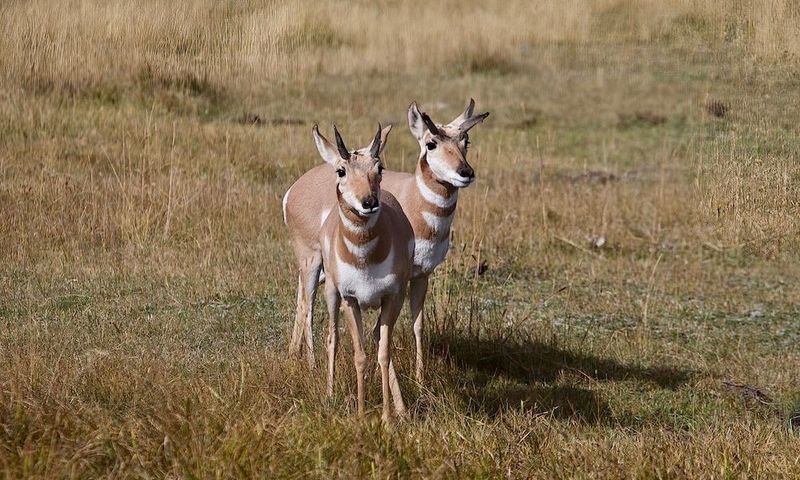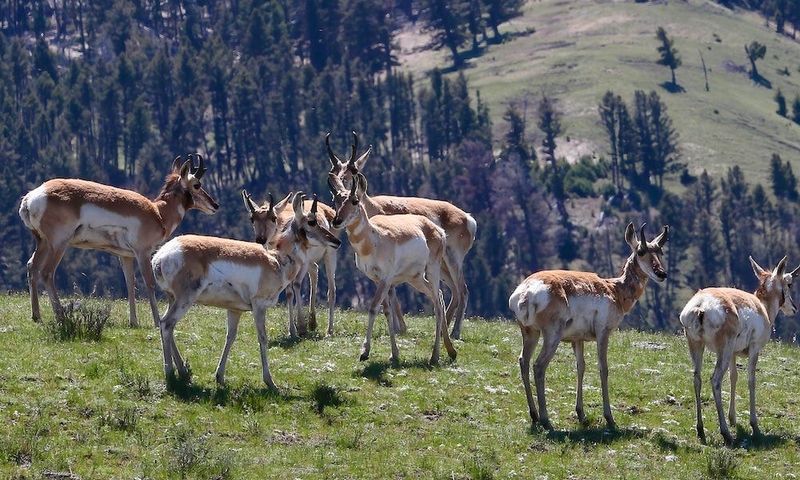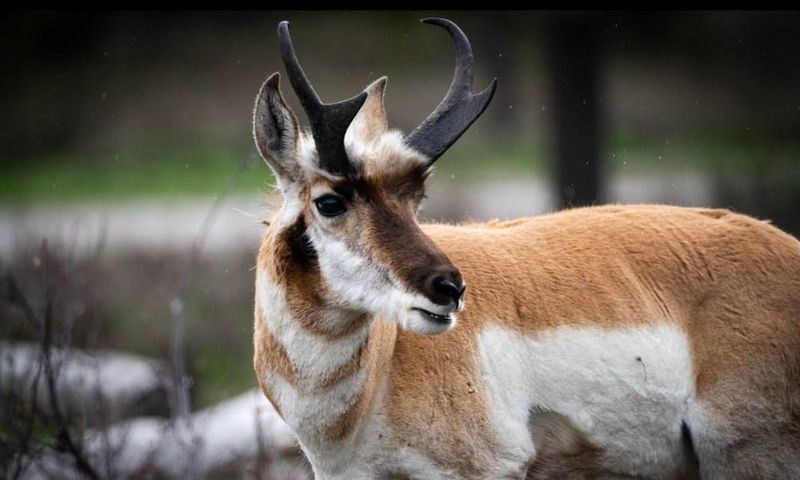


On Saturday we showcased the extraordinary speed of North American pronghorn, with footage that showed the animals easily outrunning wolves in Yellowstone National Park.
The footage was captured in late July by Jackson Hole EcoTours guide Billy Fabian.
More recently, nearby Grand Teton National Park profiled pronghorn via Instagram, sharing the following “fast facts” about the swiftest land animal in North America (only the cheetah runs faster):
–“Speed: can reach speeds of 55-60 miles per hour (and sustain that over long distances).”
–“Outlived the Competition: With no modern day predators that can run that fast, pronghorn evolved to be so speedy because they lived alongside the now extinct North American cheetah from the Pleistocene epoch.”
–“Epic Journey: The Sublette [Wyoming] Herd migrates over 100 miles between Grand Teton and the Green River Valley—one of the longest land migrations in North America. It’s called the Path of the Pronghorn.”
–“Sound the Horn! They have horns that don't shed (like bison) but shed the outer sheath each year. Cool? Weird? both.”
ALSO: Massive grizzly bear in for shock of its life while trying to mark territory
–“Not an antelope. Wait...I thought they were antelope? Nope. While antelope is a commonly used term for pronghorn, they are not actual antelopes. In fact, they are the last surviving member of the family Antilocapridae. Closest living relative? The giraffe!”
The park added: “So not only is this animal cool, it's also AWESOME. Remember, when wildlife watching: drive the speed limits, give animals space (100 yards from bears and wolves, 25 yards for everything else), don't stop in the middle of the road, and don't feed any critters.”
Regarding the name “pronghorn” versus “antelope,” Yellowstone National Park explains on its website:
“The North American pronghorn is the surviving member of a group of animals that evolved in North America during the past 20 million years. It is not a true antelope, which is found in Africa and southeast Asia.
“The use of the term 'antelope' seems to have originated when the first written description of the animal was made during the 1804–1806 Lewis and Clark Expedition.”
This article originally appeared on For The Win: Fastest land animal in North America wows tourists in Yellowstone, Grand Teton
Reporting by Pete Thomas, For The Win / For The Win
USA TODAY Network via Reuters Connect

 USA TODAY National
USA TODAY National
 Delaware Sports
Delaware Sports Iron Mountain Daily Life
Iron Mountain Daily Life The Athletic Sports
The Athletic Sports RadarOnline
RadarOnline FOX 13 Tampa Bay Crime
FOX 13 Tampa Bay Crime ABC 7 Video
ABC 7 Video Seeking Alpha Stock
Seeking Alpha Stock FOX Business Video
FOX Business Video Cover Media
Cover Media Associated Press US and World News Video
Associated Press US and World News Video